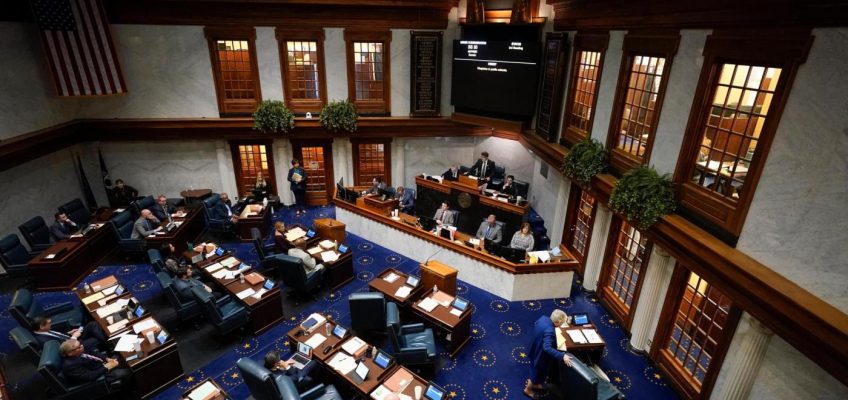By MARK SHERMAN, Associated Press
WASHINGTON (AP) — The Supreme Court agreed Friday to take up the constitutionality of President Donald Trump’s order on birthright citizenship declaring that children born to parents who are in the United States illegally or temporarily are not American citizens.
Related Articles
Indiana House Republicans pass Trump-backed map, setting up high-stakes Senate fight
Trump is meeting Mexican President Sheinbaum in person for the first time at World Cup draw
FIFA gives President Donald Trump a peace prize in a departure from its traditional focus on sport
Trump administration will expand travel ban to more than 30 countries, Noem says
Trump ventures deeper into anti-immigrant language by calling people from Somalia ‘garbage’
The justices will hear Trump’s appeal of a lower court ruling that struck down the citizenship restrictions. They have not taken effect anywhere in the country.
The case will be argued in the spring. A definitive ruling is expected by early summer.
The birthright citizenship order, which Trump signed Jan. 20, the first day of his second term, is part of his administration’s broad immigration crackdown. Other actions include immigration enforcement surges in several cities and the first peacetime invocation of the 18th-century Alien Enemies Act.
The Republican administration is facing multiple court challenges, and the high court has sent mixed signals in emergency orders it has issued. The justices effectively stopped the use of the Alien Enemies Act to rapidly deport alleged Venezuelan gang members without court hearings. But the Supreme Court allowed the resumption of sweeping immigration stops in the Los Angeles area after a lower court blocked the practice of stopping people solely based on their race, language, job or location.
The justices also are weighing the administration’s emergency appeal to be allowed to deploy National Guard troops in the Chicago area for immigration enforcement actions. A lower court has indefinitely prevented the deployment.
Birthright citizenship is the first Trump immigration-related policy to reach the court for a final ruling. His order would upend more than 125 years of understanding that the Constitution’s 14th Amendment confers citizenship on everyone born on American soil, with narrow exceptions for the children of foreign diplomats and those born to a foreign occupying force.
In a series of decisions, lower courts have struck down the executive order as unconstitutional, or likely so, even after a Supreme Court ruling in late June that limited judges’ use of nationwide injunctions.
The Supreme Court, however, did not rule out other court orders that could have nationwide effects, including in class-action lawsuits and those brought by states. The justices did not decide at that time whether the underlying citizenship order was constitutional.
Every lower court that has looked at the issue has concluded that Trump’s order violates or likely violates the 14th Amendment, which was intended to ensure that Black people, including former slaves, had citizenship. Birthright citizenship automatically makes anyone born in the United States an American citizen, including children born to mothers who are in the country illegally, under long-standing rules.
The case under review comes from New Hampshire. A federal judge in July blocked the citizenship order in a class-action lawsuit including all children who would be affected.
The administration had also asked the justices to review a ruling by the 9th U.S. Circuit Court of Appeals in San Francisco. That court, also in July, ruled that a group of Democratic-led states that sued over Trump’s order needed a nationwide injunction to prevent the problems that would be caused by birthright citizenship being in effect in some states and not others. The justices took no action in the 9th circuit case.
The administration has asserted that children of noncitizens are not “subject to the jurisdiction” of the United States and therefore not entitled to citizenship.
“The Fourteenth Amendment’s Citizenship Clause was adopted to grant citizenship to newly freed slaves and their children—not…to the children of aliens illegally or temporarily in the United States,” top administration top Supreme Court lawyer, D. John Sauer, wrote in urging the high court’s review.
Twenty-four Republican-led states and 27 Republican lawmakers, including Sens. Ted Cruz of Texas and Lindsey Graham of South Carolina, are backing the administration




